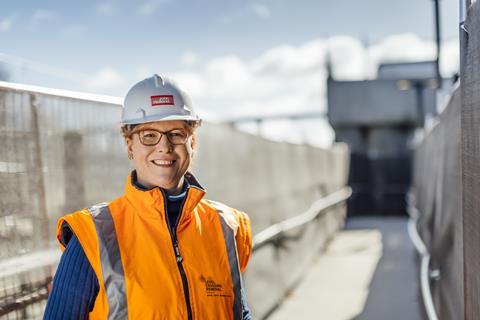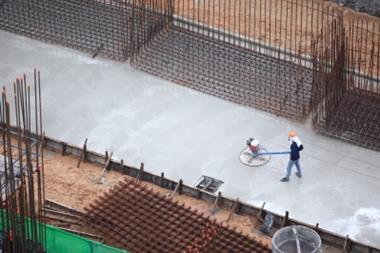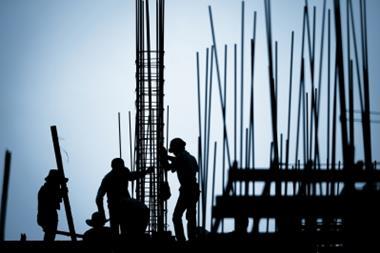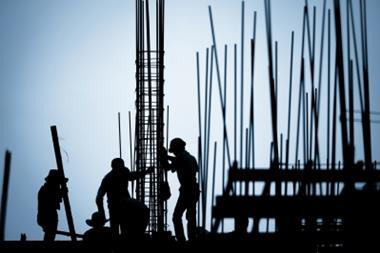Optimism bias, new owners and a changing company risk appetite are just some of the daily challenges for John Holland group general manager, risk management, Bronwyn Friday

“In a construction and engineering company, you’re up against optimism bias – even when they’re seeing projects go wrong, they always believe they’ll get the next project right.”
This is one of the key risk management challenges in the construction and engineering industry, according to John Holland group general manager, risk management, Bronwyn Friday.
And she would know. A construction manager by trade, Friday has worked in risk management at John Holland for the past eight years.
But her role, and the company, have evolved significantly over that time, she tells StrategicRISK.
A driving factor behind both changes has been the company ownership.
In April last year, the Australian-headquartered business was sold by its then-owner Leighton Holdings to China Communications Construction Company, the largest listed company in the international infrastructure and engineering sector.
New owners, means a new risk appetite and risk tolerance.
“We’re still in the process of getting to know our new owners and getting to understand what they need, and what’s just a legacy from our old owner versus what’s going to actually generate benefits for us,” she says.
Indeed, when Friday spoke to StrategicRISK, she was putting the finishing touches on her enterprise risk management board report.
“In two months’ time I’ll have a much better sense of where they sit [on ERM],” she says.
But Friday’s feeling is that they will be more willing to take on risk than their predecessor.
“I wouldn’t say they’re risk aggressive, but they’re more open for us to have a conversation that we’re confident taking a risk on to win a job,” she says. “The board and the management team are in a sweet dance at the moment of trying to understand what is the actual risk profile.”
This is evolving as new business opportunities arise, and the company seeks to expand into new markets and change its strategy.
“They want us to be a development and investment company. They want us to develop our own [projects] and they also want us to go overseas,” she says.
The global expansion play shouldn’t be a surprise given the state of the construction and engineering market in Australia.
Like most of its peers, John Holland has shrunk significantly over the past few years as the country’s pipeline of work has dried up.
“At the moment we’re focused on Singapore and as our owners get more confident they will express where we can start looking outside that, but they do have a desire to take our skillset and the brand further than Australia. And they also want to own more of these operational businesses,” she says.
“It’s been a big slog to get through the last two years through the sales process and the new owners getting to know us, but now it’s getting exciting,” she says.
Friday says the sale process allowed her team to look at the business through fresh eyes.
“There were times in the sales process where we looked like we could be split apart, and so we wanted to make sure that all parts of the business would be successful as it went forward and so we also developed an org structure for a split business. In the end it didn’t happened but that was quite a valuable process to go through,” she says.
From setting up frameworks around strategy and business planning to pricing risk in pre-contracts, Friday’s role now covers both corporate risk management and project risk management. And it’s this split of work that keeps her engaged.
“I love working with engineers, [and] being in a company that builds things and makes things. There aren’t many [risk] jobs out there that you can be so embedded in how the company is actually doing the work and I really love it,” she says.
She also thrives on the ups and downs of the sector.
“The construction industry’s a rollercoaster – you have incredible booms and incredible busts. Where in Western Australia and Queensland we’re in utter bust - there’s just hardly anything there - in Sydney and Melbourne there are more major projects than we’ve seen for decades.”
Friday graduated from her construction management degree during one of those busts. Work opportunities were slim pickings in the mid-90s and ] she bounced between companies, changing firms per project, before landing a project management role at GE.
Her introduction to risk management didn’t come until a few years later, however, when she took a role at Marsh Risk Consulting.
Corporate risk management roles at PowerCor and Fosters followed, which saw Friday cement her skills in using risk management to empower strategic and business decisions.
“If we are not enhancing how [executives] can make a business decision then I don’t see any value for doing risk management,” she says.
So how does Friday challenge the common perception of risk management being a ‘handbrake’ to progress?
“Sometimes I don’t. Sometimes I sit there and think I have no idea how to go forward. Then I go back to what a really good mentor told me – the only way to eat the elephant is to keep eating,” she says.
“I have already climbed half the mountain and I just look at all the more I’d like to see happen, which I don’t think is all that different from any risk manager I’ve ever met.
“We can always see how we can help make better decisions for the business; it’s just how much time and effort the business wants to put into it being focused on risk management versus they believe they already do it well enough.”
Two of the key areas that Friday is currently helping the business navigate its decision-making on is innovation and corporate governance.
“If we can’t keep with or ahead of innovation that’s happening across the industry then you can get yourself lost behind,” Friday says.
From 6D modelling to robotics, drones, the Internet of Things and 3D printing, massive change is happening right across the industry.
“It’s that sort of innovation that we need to be right there or ahead of it to be offering clients and to stay relevant to the industry. But all of these innovations also bring new risks,” she says.
They are also typically being introduced by smaller, more agile companies, which presents another challenge.
“The business is literally in this decision process at the moment in how do we allow ourselves to be agile and resilient as a company by having the right governance structure and the right operating model. I don’t think we’re there yet,” Friday says.
She also adds that another top risk is resources.
“At the moment there are resources out there – you’ve got them all flowing off the oil and gas and mining jobs. But there’s a point on the mega jobs where we’re going to hit not being able to have the resources in the industry to support all of them,” she says.
Despite facing the trifecta of less turnover, less resources and new owners, Friday remains upbeat.
“Risk management gave me the skillset to understand that you can focus on what’s going wrong but the aim is to work out how to make it go right.”




















No comments yet